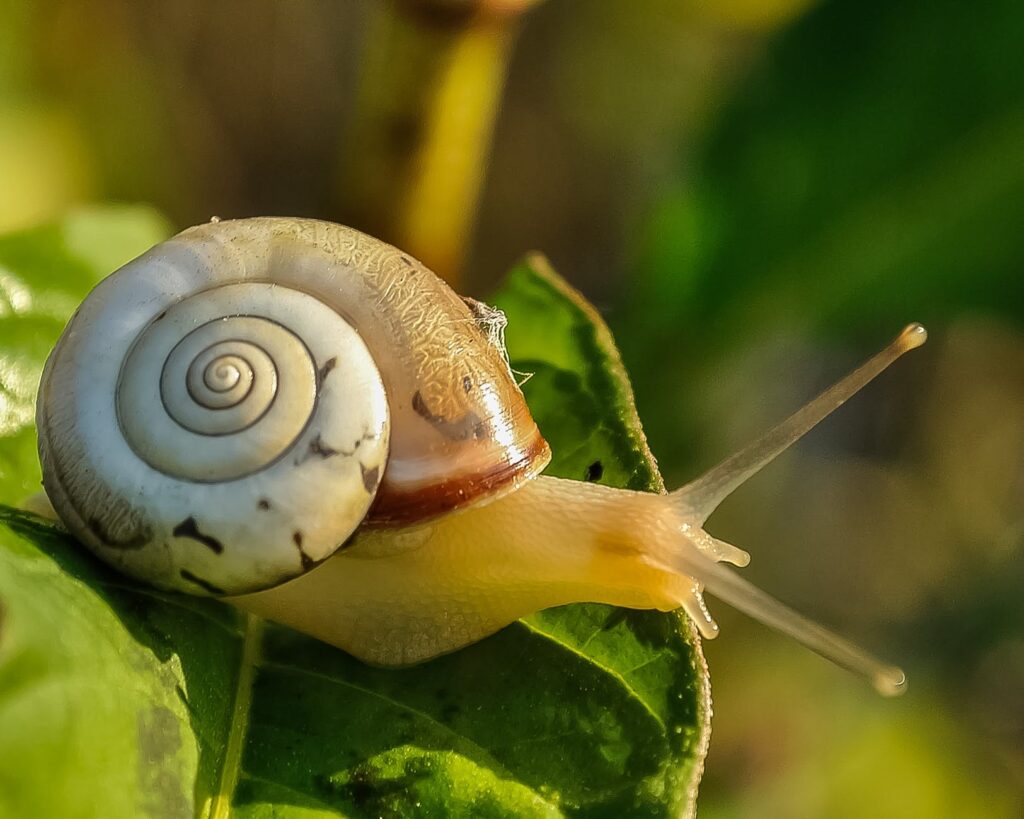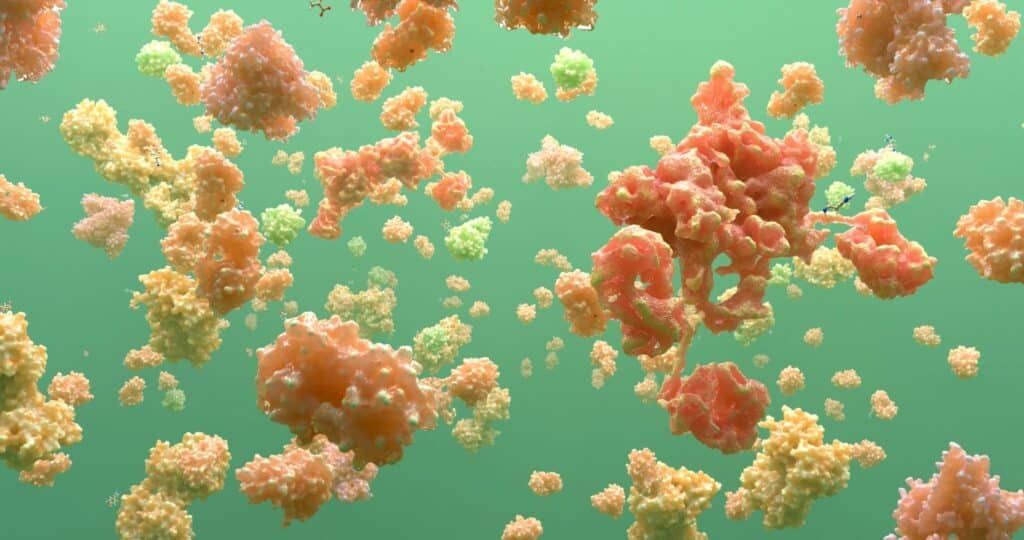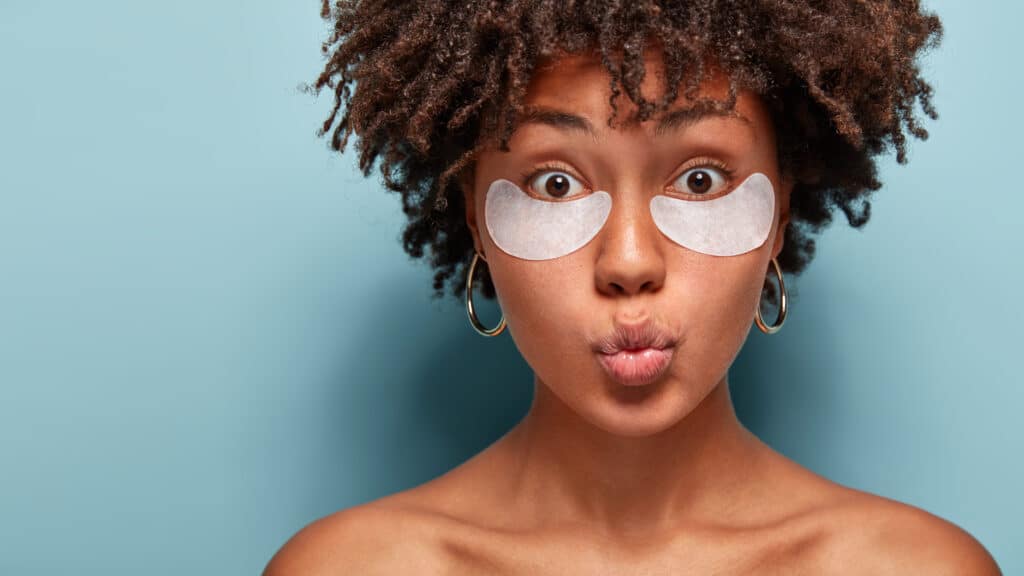written by Allison Goins, Ph.D. | Published on April 11th, 2021 at 2:45 pm | Updated on January 22nd, 2024 at 7:31pm
Snail slime has become a key player in many people’s skincare routines, and today, let’s delve into why that is. This article is part of our series on K-beauty or Korean beauty skincare series. Previously, we explored centella asiatica, and now, we’re shining a light on snail mucin for skin.
What Does It Do For Snails | Composition | What is It? | Benefits of Mucin | Debunking Myths | What to Expect
About the Author: Hi skincare sleuths! Dr. Allison here, your resident science translator with a Ph.D. in Materials Science and Engineering. While my days might not involve snail slime (yet!), my fascination with how things interact with the body? Still as gooey as ever. That’s why I founded Relatable Science – a haven where I take the jargon-filled world of skincare research and turn it into actionable advice for real women like you. Think peer-reviewed studies, not petri dishes! Today, we’re diving into the fascinating (and slightly slimy) world of snail mucin. Is it just a slimy trend, or does it actually deserve a spot in your routine? We’ll unravel the hype, explore its potential to soothe irritation, boost hydration, and even fight signs of aging, all backed by solid research (no slime metaphors needed!). So, ditch the confusion and embrace the power of informed skincare choices with me! Let’s unlock the mysteries of snail mucin, one research paper at a time, and discover if it’s your next skincare hero.

The Purpose of Snail Slime
For snails, their slime serves as a protective shield. It’s a polymeric substance packed with various biological molecules. Remarkably, snail slime is more than 90% water, making it behave much like a hydrogel. The biological molecules within this hydrogel network have specific functions, guarding the snail against environmental factors like UV rays, dirt, and extreme temperatures. So naturally it makes sense that someone wanted to see if it could have these protective and hydrating benefits in human skin.
What is Snail Mucin?
Mucin is a biomaterial found not only in snails but elsewhere in the natural world. Mucins are high molecular weight glycosylated proteins produced by goblet cells. Their primary role is to protect epithelial cells from harsh surroundings.So its not surprising that scientists would look at snail mucin for skin and see if it has similar protective benefits.
Structure of Mucin
Mucins are polymers. The rod-shaped monomers produced in the body bond together, forming a thick mucus when secreted. The outer coating of mucin is sugar-based. This coating enables mucin to retain large amounts of water and prevents protein breakdown, crucial for its protective barrier function.

Understanding the Benefits of Snail Mucin for Skin
Skincare products featuring snail mucin-containing ingredients go by various names, including snail slime, snail mucin, snail slime filtrate, or snail secretion filtrate. These products that contain snail mucin for the skin typically have marketing claims like moisturizing, collagen stimulation, skin healing, and regeneration promotion. Now, let’s separate the science from the hype.
Mucins are secreted along with other molecules when snails face stressful environments, and they serve a protective role. Additionally, these secreted molecules offer unique functionalities:
- Allantoin acts as a moisturizer and also has soothing benefits.
- Glycolic acid can function as an exfoliant and humectant.
- Hyaluronic acid is another humectant so it helps hydrate your skin
- Some antimicrobial molecules, like copper, help prevent microbe growth.
Claims that snail slime filtrate enhances skin moisture make sense. Besides the water-retaining sugar coating on mucin, there are other humectants like hyaluronic acid and allantoin that draw moisture from the environment, keeping your skin hydrated.
Related Post: What Does Hyaluronic Acid Do: A Complete Guide
Debunking Some Claims About Snail Slime in Skincare
However, there’s no evidence to support claims that topical application of mucin stimulates collagen production or accelerates healing. Limited evidence suggests that snail slime may have some regenerative effects when applied to wounded skin.
This regenerative benefit likely results from the small concentration of growth factors also found in snail slime. These growth factors are chemokines, attracting cells to a wounded area.
Related Post: Is a Growth Factor Serum in Skincare Hype or Helpful?
Yet, there’s nothing conclusive directly linking snail slime to enhanced collagen production or wound healing. In this respect, it’s akin to collagen.
Related Post: The Truth About Collagen Skincare
In essence, snail mucin and snail slime filtrate offer moisturizing benefits due to their humectant components. However, claims of collagen stimulation and wound healing require an actual wound for the dermal cells to interact with the mucin and other components.
Realistic Expectations

In conclusion, snail mucin offers fantastic moisturizing benefits which can be very soothing for the skin and temporarily make skin look fuller and more youthful. All of the other benefits that are claimed for snail mucin do not really have scientific support. Therefore, if you’re considering snail mucin products, it’s important to set realistic expectations.
Focus on its hydrating properties and how they align with your skin’s needs. Snail mucin is a great addition to your skincare routine if you tend to have drier skin. It is also a good addition for winter months, but remember to periodically spritz your face so that there is water for the humectants to hold on to.
If you want to try a product with snail mucin I recommend the Peach and Lily Snail Rescue Intensive Wash-Off Jelly Mask.
Related Post: Decoding A Holy Grail Skin Barrier Cream: Snail Rescue Intensive Wash-Off Mask Review
At our blog, we’re committed to providing you with science-backed insights into skincare products and ingredients. We want you to be confident in your choices, knowing that you’re making informed decisions about your skincare routine. Whether you’re new to skincare or a seasoned enthusiast, we’re here to guide you on your journey to healthy, radiant skin.
So are you ready to unlock the secrets of snail mucin for skin care and enhance your skincare routine? Explore the world of skincare with confidence. Discover products that align with your skin’s unique needs, and remember, knowledge is the key to radiant, healthy skin. Take the next step on your skincare journey and make informed choices. Your skin deserves nothing but the best.
Join us on this exciting adventure toward beautiful, glowing skin. Explore our blog for more insights into skincare ingredients, formulations, and product reviews. Let’s embark on this journey together and make every day a great skin day!
Article Sources:
McDermott Maxwell, Cerullo Antonio R., Parziale James, Achrak Eleonora, Sultana Sharmin, Ferd Jennifer, Samad Safiyah, Deng William, Braunschweig Adam B., Holford Mandë.Advancing Discovery of Snail Mucins Function and Application. Frontiers in Bioengineering and Biotechnology, 9.2021.10.3389/fbioe.2021.734023
Wargala E, Zalewska A, Sławska M, Kot I. Snail mucus as an innovative ingredient used in the cosmetology and medical industry. Aesth Cosmetol Med. 2023;12(2):45-49. https://doi.org/10.52336/acm.2023.001
Aflatooni S, Boby A, Natarelli N, Albers S. Snails and Skin: A Systematic Review on the Effects of Snail-based Products on Skin Health. Journal of Integrative Dermatology. Published online October 31, 2023.
